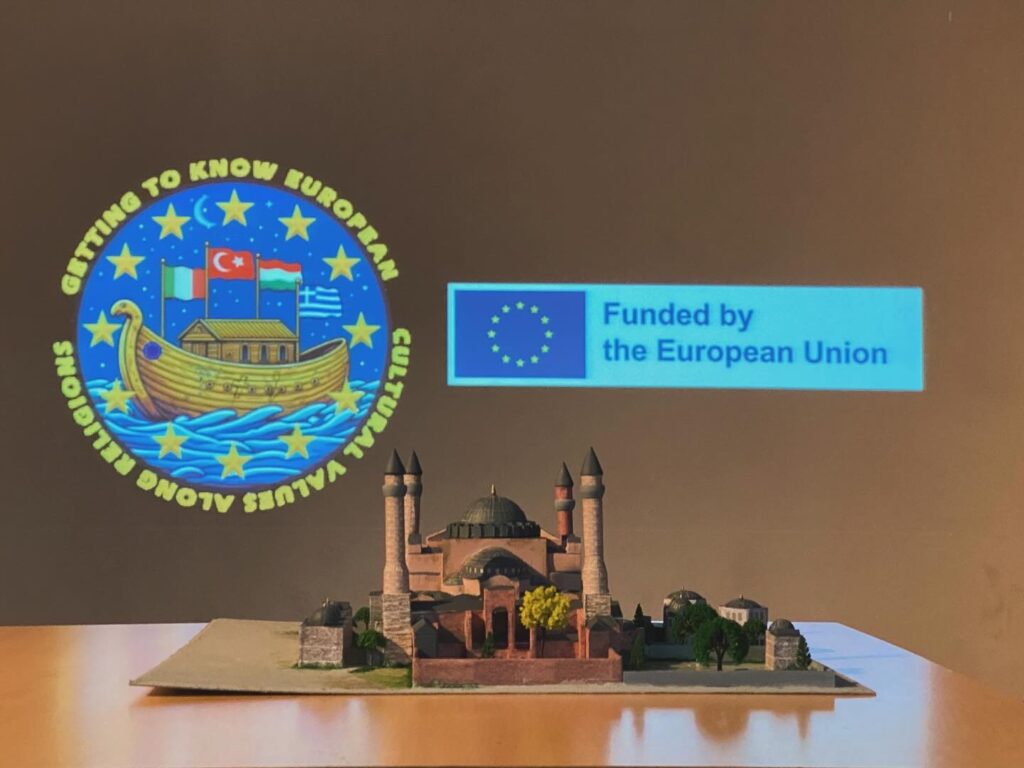
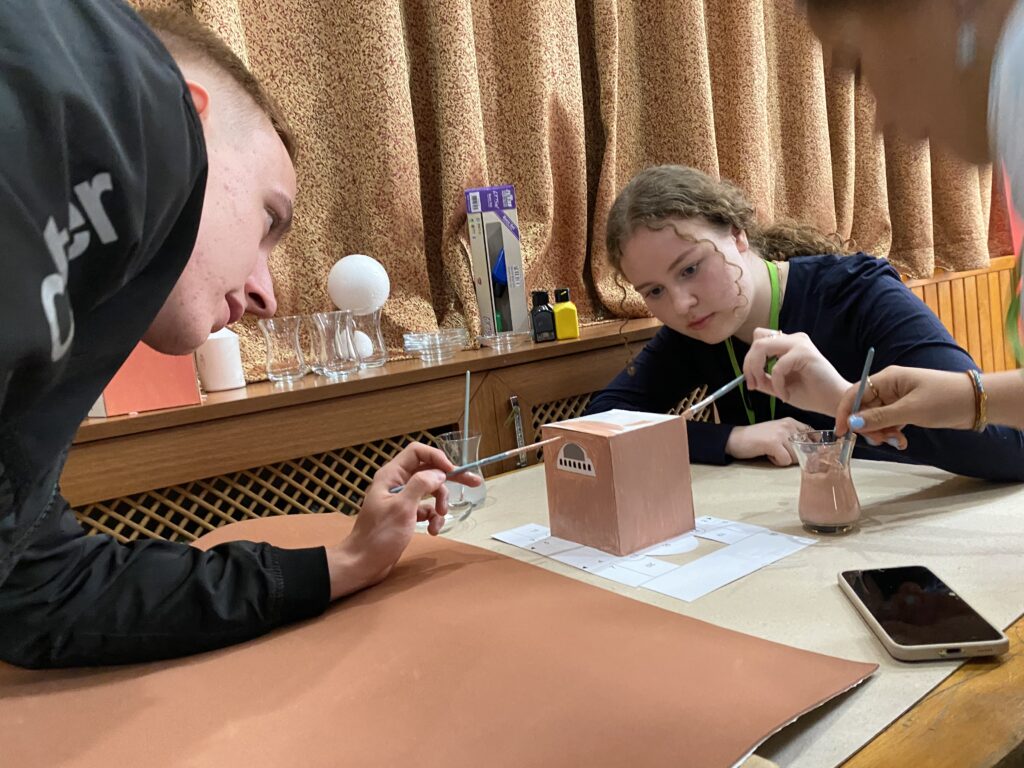
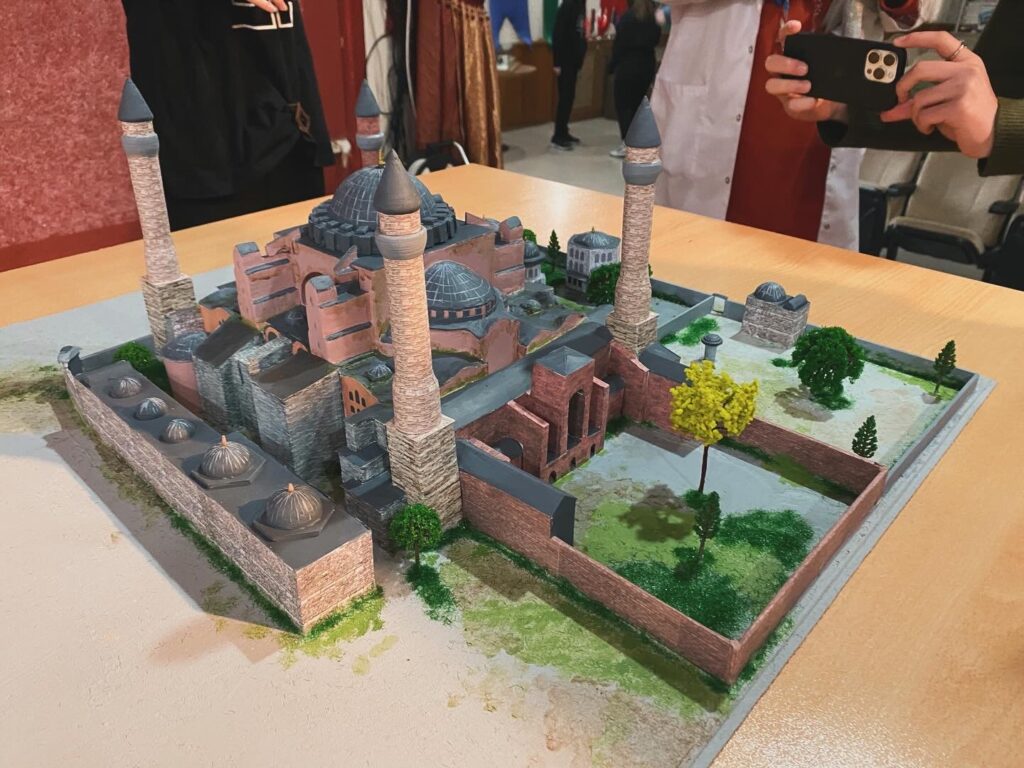
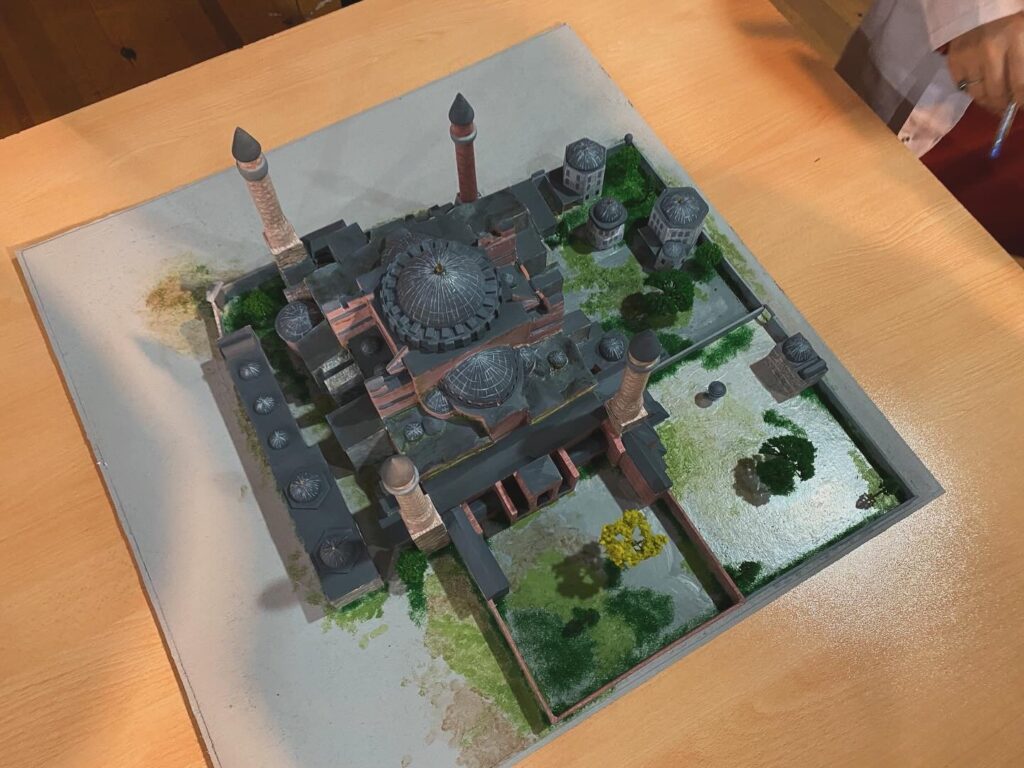
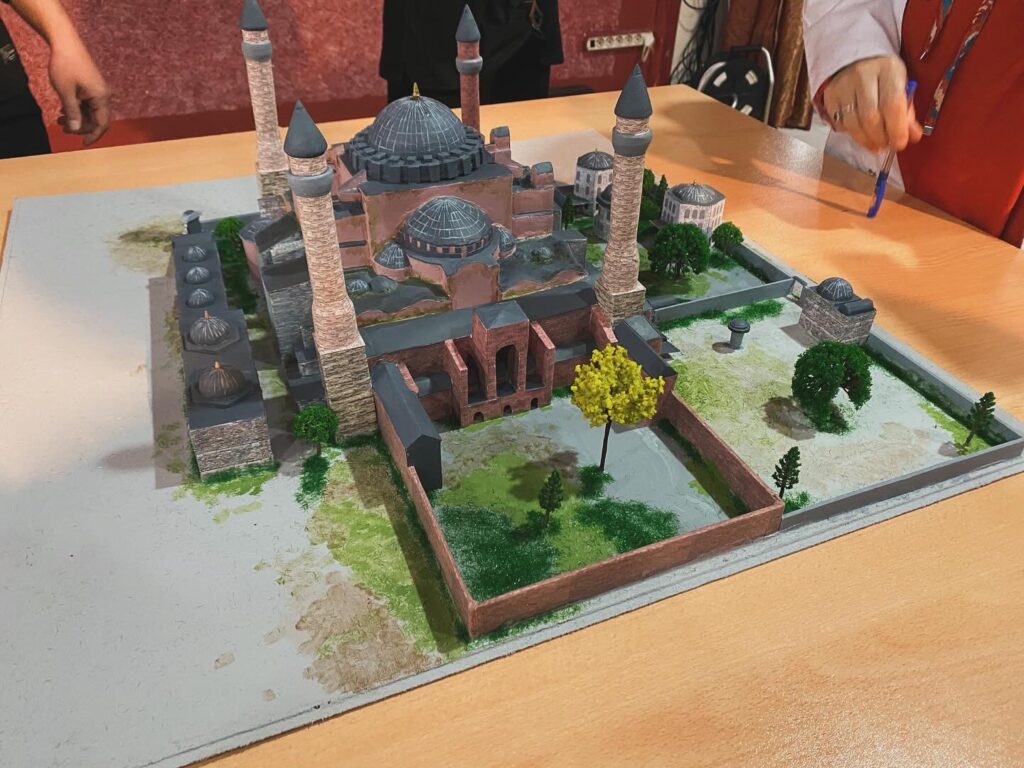
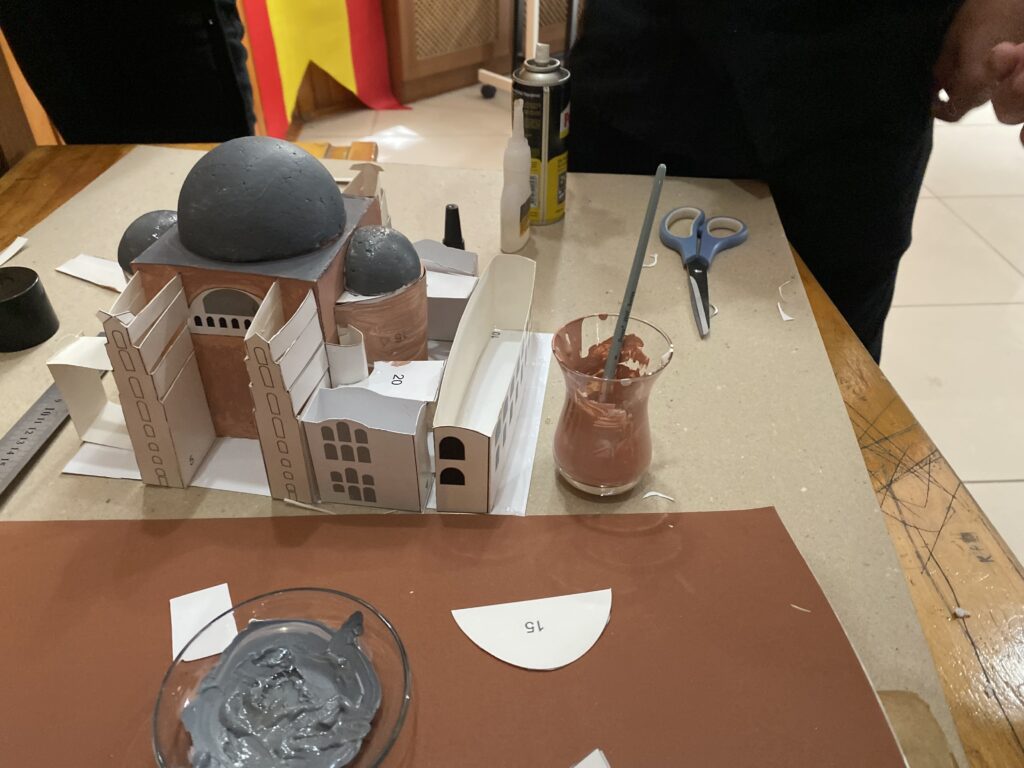
The Construction Process of the Hagia Sophia Model
In this project, a detailed and scaled model representing the architectural features of the Hagia Sophia was created. The work began with thorough research on the historical and architectural elements of the structure, including plans and elevation drawings. It was decided to build the model at a 1:100 scale, and the layout of the building was drawn on the base accordingly.
First, the main structure of the building was formed using foam board and cardboard. The central dome and the surrounding semi-domes were shaped and attached to the body of the model. The supporting columns and arches were also modeled using thin cardboard and craft materials.
The minarets were constructed from thin cardboard tubes and reinforced with sticks or skewers. Conical caps were added to the tops of the minarets. The exterior façade of the model was then detailed with doors, window frames, and arched structures, carefully cut and placed using a craft knife. The colonnades and inner courtyard were added in proportion to the rest of the model.
Next, landscaping was carried out. Garden walls were built from cardboard, and green areas were represented using model grass, colored felt, and powdered paint. Model trees were placed to enhance realism. Decorative elements such as fountains and garden fixtures were also added.
The entire structure was painted using acrylic paints. Dry brushing and shading techniques were used to achieve a realistic appearance. Shadows and surface textures were carefully applied. Finally, the entire model was checked for accuracy, any missing parts were completed, and final fixings were made.
This project was completed through the collaborative efforts of Erasmus high school students from Turkey, Hungary, Italy, and Greece. By combining different cultural and technical perspectives, the students not only learned about architecture but also experienced the power of teamwork. This shared creation process became a successful example of cultural exchange and cooperative learning.
